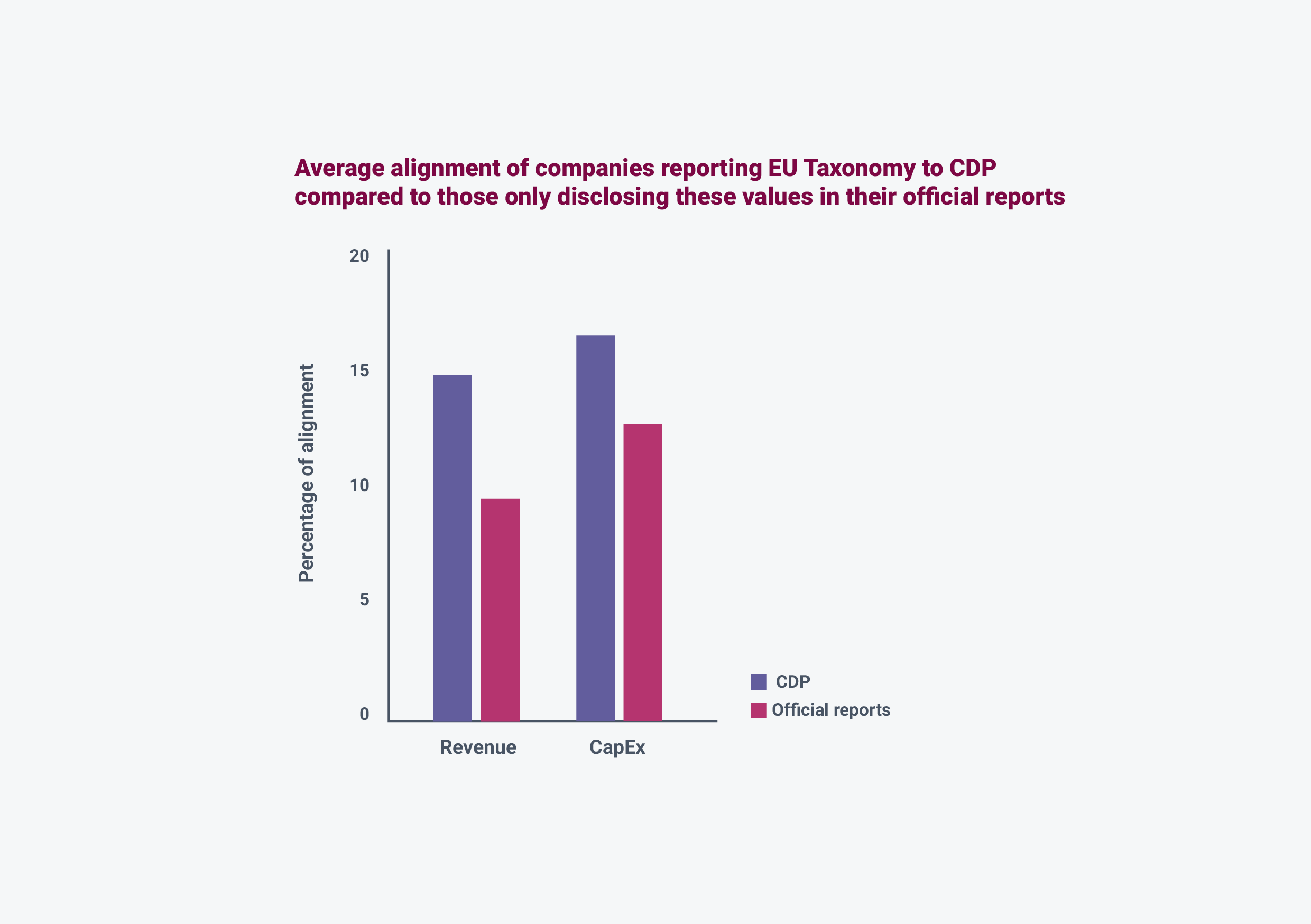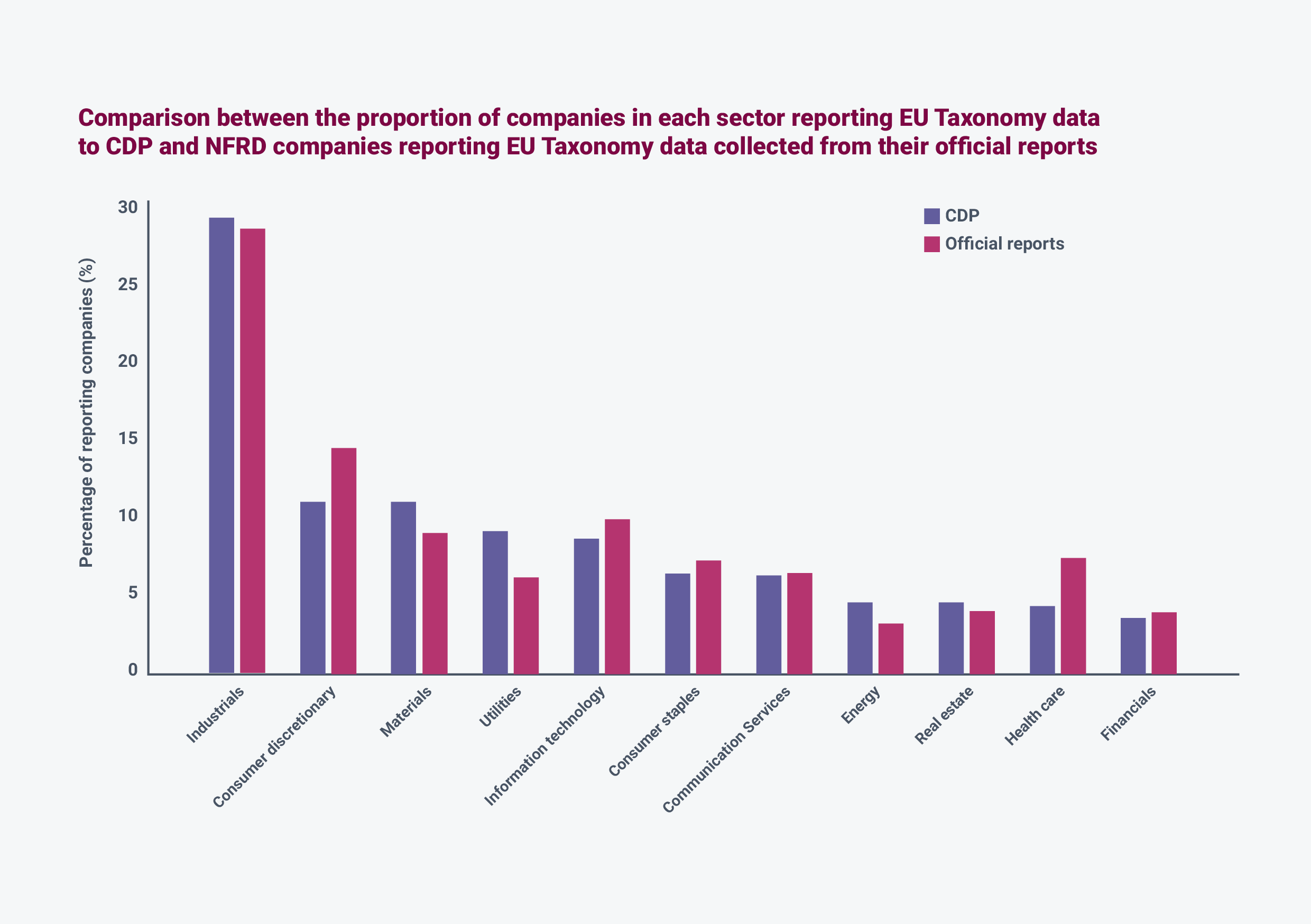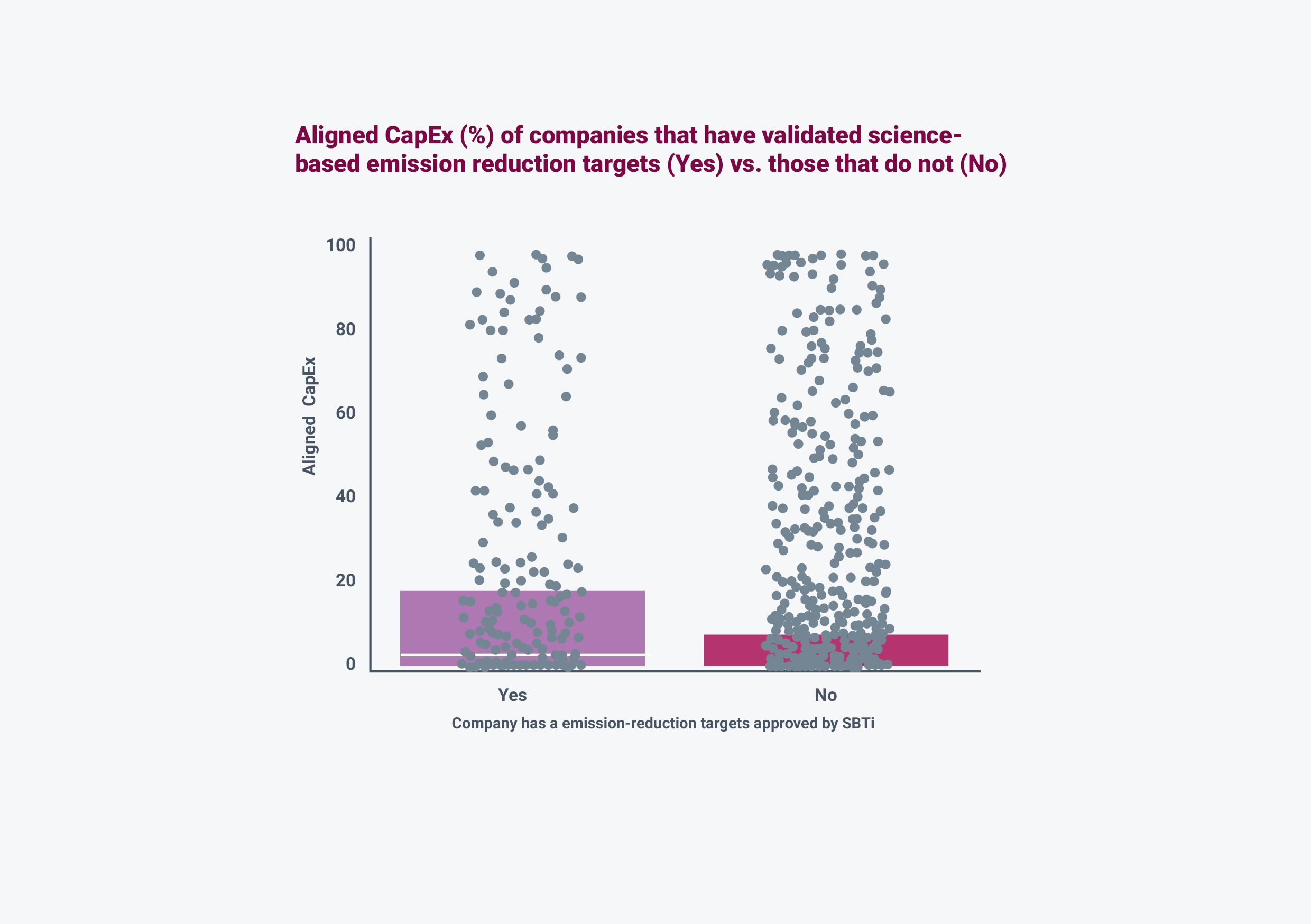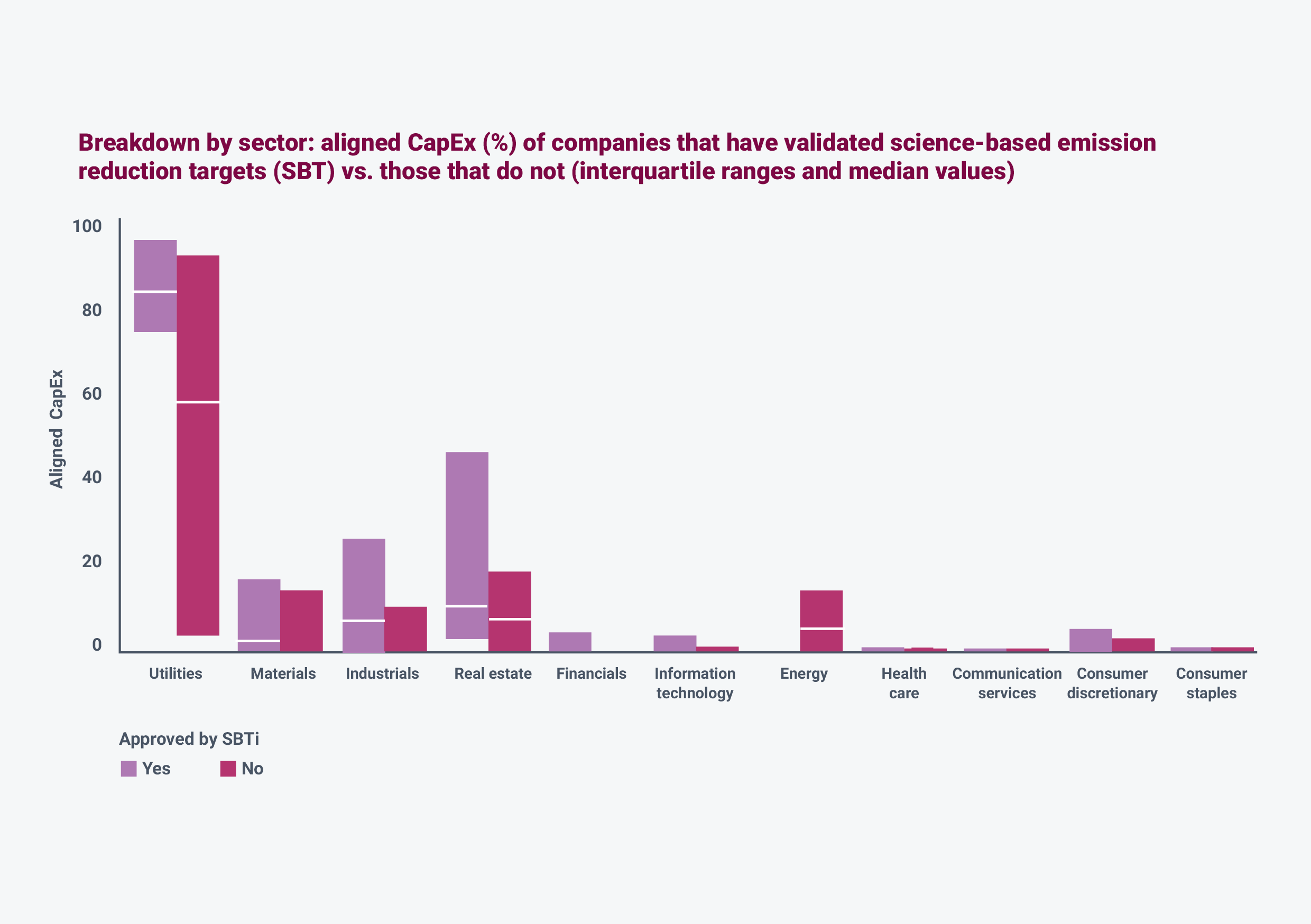Stronger Together: Exploring the EU Taxonomy as a Tool for Transition Planning
Report on 2023 EU Taxonomy data
Explore how companies can use the EU Taxonomy to support transition planning and how investors should analyze that data to make informed sustainable finance decisions.
As the first year that companies are legally bound to report under the EU Taxonomy, 2023 has seen an unprecedented goldmine of granular sustainability data released into the public domain. However, it’s one thing to have access to this data, it’s quite another to understand how to interpret and use it.
In this report, CDP and Clarity AI take on the challenge of unlocking this data for decision making – made possible by the addition of CDP's unique questions on sustainable finance taxonomies in our 2023 questionnaire. To help unleash the potential of the EU Taxonomy to truly fulfill its mission to scale up sustainable investment in Europe and make the European Green Deal a reality, we analyze the disclosures from around 1,700 companies in the first report to explore how the EU Taxonomy can be used in the context of transition planning.
Taxonomy data reveals a company's current and potential future alignment with the net-zero transition either at the level of economic activities that generate revenue or the ones towards which they direct their spending.
Since companies with similar emission intensities can have varying levels of Taxonomy revenue eligibility and alignment, there is a need to contextualize this data within a company's transition plan. This report presents early-stage evidence from approximately 600 companies that already mention the EU Taxonomy in the context of transition planning when reporting to CDP.
We find that, on average, companies linking the Taxonomy with their transition plans disclosed a revenue alignment of 14%, significantly higher than the 9% reported by the rest of the companies in our sample. This observation also applies to capital expenditures (CapEx).

This suggests that companies that have already started identifying associated revenues and spending in line with their transition using the EU Taxonomy tend to have higher Taxonomy-aligned KPIs.
These results should however be interpreted carefully, as it is difficult to identify the driver of the relationship. The difference could be driven by a sectoral bias. For example, materials, utilities and energy companies represent a higher share of companies that identify the EU Taxonomy KPIs in their financial planning. We observe the opposite for lower impact sectors such as healthcare and IT.

Discussions on the EU Taxonomy’s role in corporate transition tend to focus on forward-looking information captured by CapEx metrics, which should help assess if the money spent by a company is financing its alignment to a 1.5 degree future.
One of the key elements of a corporate transition plan and assessment of its credibility is the presence of an ambitious and science-based target (SBT) set by the company.
Looking at forward-looking indications of corporate transition, this report finds that companies that have set SBTs are demonstrating greater alignment of their capital expenditures, highlighting the value of the Taxonomy to evaluate companies' commitment to these targets.

This relationship between validated science-based targets and aligned CapEx applies for most sectors.

Out of 1,700 Non-Financial Reporting Directive (NFRD) companies that published EU Taxonomy reports this year, around 600 identified their revenues and spending as part of their transition plans, and approximately 300 have validated science-based targets, both of which correlate to higher taxonomy alignment overall.
Our report also explores how numbers of eligibility and alignment hide large variations across and within sectors, and how the correlation between emission performance and Taxonomy revenue alignment doesn't always equate to a company's position in the transition journey.
Dive deeper into the new era of mandatory disclosure with our webinar series
Explore CDP's resources on the EU disclosure regime
Find out about CDP's questions on the EU Taxonomy


